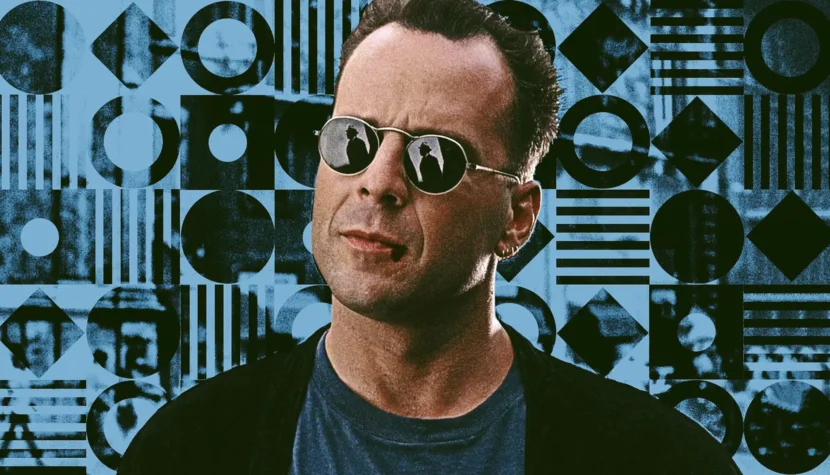HUDSON HAWK. Unjustly Regarded as the Unwanted Outcast in Willis’s Portfolio

A very popular type of hero in pop culture is the charming gentleman-thief, who can steal both cleverly hidden treasures and hearts alike. Recently gaining renewed fame thanks to Netflix’s “Lupin”, this archetype includes Danny Ocean, as portrayed by George Clooney in Steven Soderbergh’s trilogy, Karen McCoy (Kim Basinger) from “The Real McCoy”, and Robert MacDougal (Sean Connery) in “Entrapment”, just to name a few. In the early 90s, another hero joined their ranks, though he’s somewhat forgotten today: Eddie Hawkins, played by Bruce Willis in “Hudson Hawk”.
At that time, Willis was fresh off the success of the first two “Die Hard” movies, solidifying his place among Hollywood’s charismatic, rugged heroes. At one point, he decided to not only take on the lead role but also contribute to the screenplay. He joined forces with Steven E. de Souza and Daniel Waters to create “Hudson Hawk”, a humorous, action-packed adventure about the escapades of a certain thief. On set, Willis often threw out improvisational ideas, many of which made it into the film.

The setup is as classic as it gets: after a few years in prison, gentleman thief Eddie Hawkins, also known as Hudson Hawk, is released. He’s ready to give up his “profession,” enjoy a cappuccino, and savor his freedom. Unfortunately, his past won’t let him go. Some powerful people force him into one last heist: he’s tasked with stealing a horse sculpture created by Leonardo da Vinci for the Sforza family. His employers have their own plans involving the legendary inventor, and Eddie is just a pawn in their game—at least for now.
The figure of the Italian artist has fascinated people for centuries, and Hollywood creators haven’t escaped the allure of his genius. Da Vinci regularly appears either as a central character in films, books, and series or as the Renaissance man whose spirit hovers over the plot. In “Hudson Hawk”, his persona and work serve as a pretext for Eddie’s lighthearted battles with gangsters.
Unfortunately, the film flopped at the box office, earned three Golden Raspberry Awards, and is still considered an unloved blemish in Willis’s portfolio. Unfairly so, as “Hudson Hawk” works wonderfully in its genre. It has good pacing, a star-studded cast (including James Coburn and Andie MacDowell), a charmingly playful Bruce Willis in the lead role, and a generally enjoyable vibe. But audiences expected something similar to “Die Hard” (which the marketing campaign also hinted at), and they were disappointed by the sometimes slapstick humor in Michael Lehmann’s film, especially the cartoonishly exaggerated villains. “Hudson Hawk” is much closer in tone to the lighthearted series “Moonlighting” than to the intense, action-filled “Die Hard” films.

The story quickly moves to Europe, showcasing the picturesque settings of Rome, the Vatican, and the Italian countryside. Another highlight is the heist scenes, in which Hawk and his friend keep track of time… by humming songs, like those by Bing Crosby. These tracks (performed by Willis and Danny Aiello!) made it onto the soundtrack.
The film radiates an ironic, adventurous, almost campy atmosphere that, combined with the Roman locations, evokes the feel of a relaxing getaway to the Italian Peninsula. “Hudson Hawk” is worth a chance, though it’s not a film for everyone. It requires a hefty dose of suspension of disbelief, but if you approach it with the right mindset, it can be a lot of fun.

